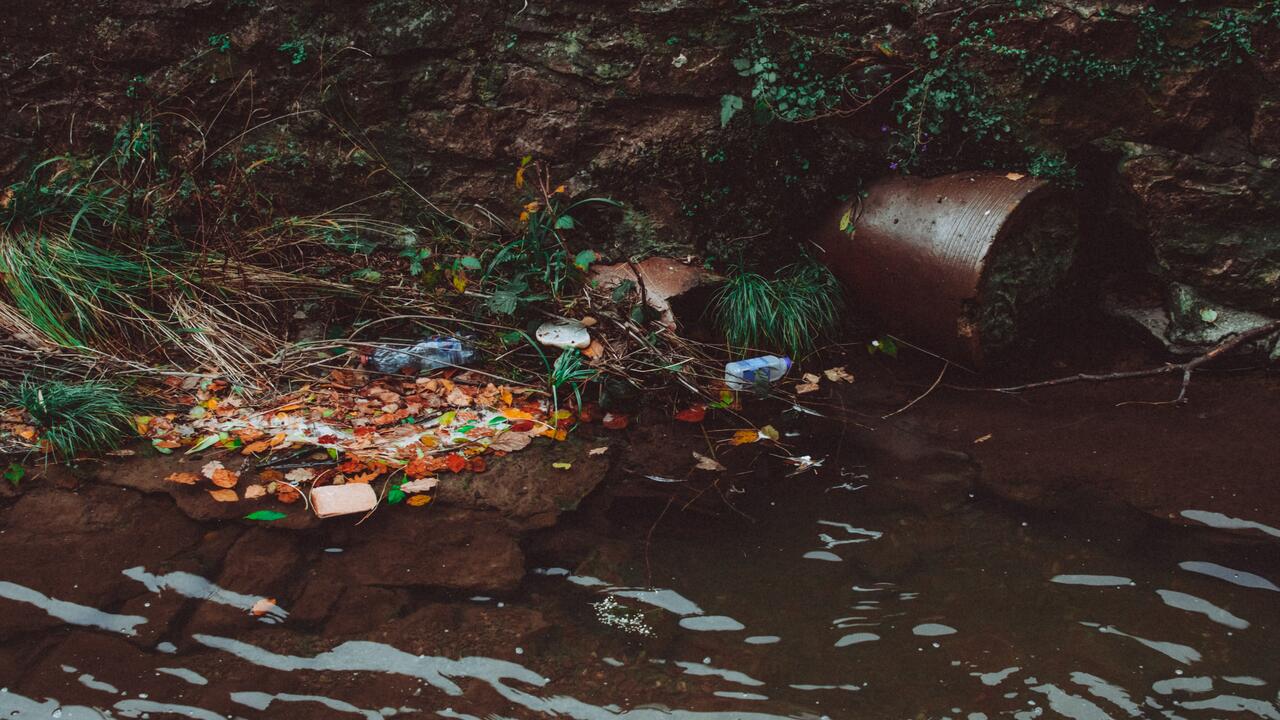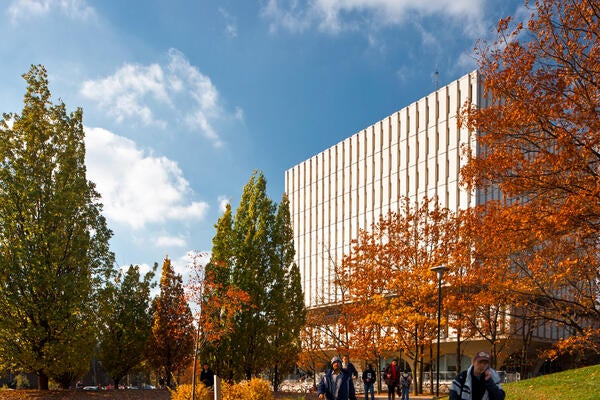
Cleaning up dirty water lands major research award for Waterloo nanotechnology engineer
Nanotechnology engineering student Stuart Linley is working on eliminating naphthenic acids in dirty water

Nanotechnology engineering student Stuart Linley is working on eliminating naphthenic acids in dirty water
By Carol Truemner Faculty of EngineeringEach day, contaminants from pharmaceuticals make their way into municipal water systems. Add in things like caffeine and artificial sweeteners poured down kitchen sinks and you have a mix of pollutants that can’t fully be removed by conventional treatments like filtration or chlorination.
Nanotechnology engineer Stuart Linley has been working on safely eliminating naphthenic acids, one of the most scientifically challenging contaminants in our water reservoirs.
As an undergraduate student, Linley spent a couple of co-op terms in the lab of chemical engineering professor Frank Gu. There, he used magnetic nanoparticles to effectively remove pharmaceutical and other contaminants found in the municipal water system.
The magnetic nanoparticles have three major components arranged in layers, explains Linley, now a Waterloo nanotechnology engineering doctoral candidate. The core is iron oxide, a magnetic ceramic that allows the nanoparticles to be removed from water by applying a magnet. The outer layer is titanium dioxide, a photocatalyst that when in contact with sunshine and other forms of UV light destroys the contaminants in water. And because the nanoparticles are catalysts, they can be recovered and re-used indefinitely.
Finding success with his technology, Linley has turned his attention to a more daunting challenge: cleaning up dirty water contaminated from Canada’s oil sands.
While the toxic wastewater left over from the production process is contained in tailings ponds, the combination of water, sand, clay, residual oil, and naphthenic acids is highly toxic and poses a significant ecological threat.
Since last fall, Linley and other students working in Gu’s lab have shown that the magnetic nanoparticle treatment process is also effective in tackling this environmental problem.
“As well, I’m investigating how nanoparticles could be used to treat oil spills on land that seep into the soil,” Linley says. “This is an exciting project that poses a lot of new challenges.”
Linley’s work is getting noticed. Last year, he was awarded the prestigious Vanier Canada Graduate Scholarship that provides $150,000 of research funding from NSERC over three years. And, as far as Linley is concerned,there’s no better place than Waterloo Engineering to conduct his research.
Waterloo has excellent facilities, the best in Canada.”
“Here I can draw information and expertise from research experts focused on water analysis, water treatment and nanomaterials design,” says Linley. “With the overlap of these disciplines at Waterloo we are uniquely positioned to tackle the wastewater contamination problem.”
Linley says it was his mentor Gu, the Canada Research Chair in Nanotechnology Engineering, who influenced his decision to stay at Waterloo after he completed his BASc last spring.
“Frank is open to new ideas, fosters experimentation and has given me the opportunity to run with my own project,” he says.
Once he has completed his PhD Linley would like to implement his research through a business venture. One of his ideas? To create a mobile purification unit that can be placed into any water system, anywhere in the world, to treat contaminants. A lofty goal, perhaps, but thanks to Waterloo Engineering, one that Linley is ideally prepared to tackle and reach.

Read more
Meet five exceptional Waterloo graduate students crossing the convocation stage as Class of 2025 valedictorians

Read more
Twenty-six researchers receive federal funding to drive discovery, innovation and research infrastructure development

Read more
The Royal Society of Canada welcomes five new fellows and one RSC College member from the University of Waterloo
Read
Engineering stories
Visit
Waterloo Engineering home
Contact
Waterloo Engineering
The University of Waterloo acknowledges that much of our work takes place on the traditional territory of the Neutral, Anishinaabeg, and Haudenosaunee peoples. Our main campus is situated on the Haldimand Tract, the land granted to the Six Nations that includes six miles on each side of the Grand River. Our active work toward reconciliation takes place across our campuses through research, learning, teaching, and community building, and is co-ordinated within the Office of Indigenous Relations.